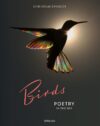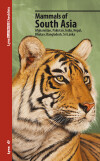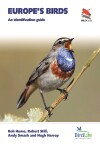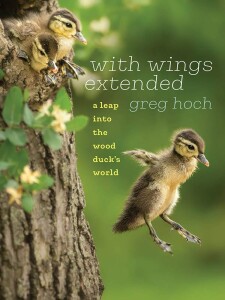 With Wings Extended: A Leap into the Wood Duck’s World
With Wings Extended: A Leap into the Wood Duck’s World
by Greg Hoch
From University Of Iowa Press:
A century ago, many people had given up on the wood duck, dooming it to extinction along with the passenger pigeon and Carolina parakeet. Today, it’s one of the most familiar and most harvested ducks in the eastern half of the country, and one of America’s great conservation success stories.
In With Wings Extended, Minnesota conservationist Greg Hoch introduces readers to a duck they probably recognize but may not know well. This book shows how almost anyone can get involved in conservation and do something for wildlife beyond writing checks to conservation organizations. Hoch illustrates the complexities of wildlife and habitat management that landowners as well as state and federal wildlife agencies deal with on a daily basis, and takes readers through the life stages of what is largely considered the most beautiful duck in the world. In this fascinating and practical read, Hoch blends the historical literature about the species with modern science, and also shows how our views of conservation have changed over the last century.
This is Greg Hoch’s third book in this series, following accounts of Greater Prairie-Chicken and American Woodcock. I reviewed the latter – Sky Dance of the Woodcock – and found it to be a very enjoyable, accessible account. This looks to be the same – except this new one is graced with some color photographs. If you have any interest in Wood Ducks or habitat management, then you should check it out.
With Wings Extended: A Leap into the Wood Duck’s World
by Greg Hoch
Paperback; 184 pages
University Of Iowa Press; May 4, 2020
ISBN: 9781609386955
$35.00
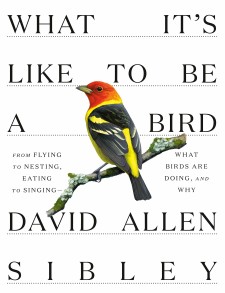 What It’s Like to Be a Bird: From Flying to Nesting, Eating to Singing-What Birds Are Doing, and Why
What It’s Like to Be a Bird: From Flying to Nesting, Eating to Singing-What Birds Are Doing, and Why
by David Allen Sibley
From Knopf:
The bird book for birders and nonbirders alike that will excite and inspire by providing a new and deeper understanding of what common, mostly backyard, birds are doing–and why.
“Can birds smell?” “Is this the same cardinal that was at my feeder last year?” “Do robins ‘hear’ worms?” In What It’s Like to Be a Bird, David Sibley answers the most frequently asked questions about the birds we see most often. This special, large-format volume is geared as much to nonbirders as it is to the out-and-out obsessed, covering more than two hundred species and including more than 330 new illustrations by the author. While its focus is on familiar backyard birds–blue jays, nuthatches, chickadees–it also examines certain species that can be fairly easily observed, such as the seashore-dwelling Atlantic puffin. David Sibley’s exacting artwork and wide-ranging expertise bring observed behaviors vividly to life. (For most species, the primary illustration is reproduced life-sized.) And while the text is aimed at adults–including fascinating new scientific research on the myriad ways birds have adapted to environmental changes–it is nontechnical, making it the perfect occasion for parents and grandparents to share their love of birds with young children, who will delight in the big, full-color illustrations of birds in action. Unlike any other book he has written, What It’s Like to Be a Bird is poised to bring a whole new audience to David Sibley’s world of birds.
Gorgeous art and fascinating information come together here. The organization makes it easy to pick up and read whatever strikes your fancy, while the depth of information means that anyone can learn a great deal. And then there’s the art – lots and lots of it. All that makes this book attractive to anyone even remotely interested in birds.
What It’s Like to Be a Bird: From Flying to Nesting, Eating to Singing-What Birds Are Doing, and Why
by David Allen Sibley
Hardcover; 240 pages
Knopf; April 14, 2020
ISBN: 9780307957894
$35.00

Buy from Buteo Books
(based in the U.S.)
Buy from NHBS
(based in the U.K.)
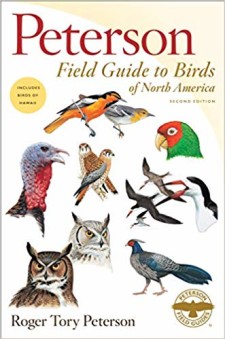 Peterson Field Guide to Birds of North America, Second Edition
Peterson Field Guide to Birds of North America, Second Edition
by Roger Tory Peterson
From Houghton Mifflin Harcourt:
For decades, the Peterson Field Guide to Birds has been a popular and trusted guide for birders of all levels, thanks to its famous system of identification and unparalleled illustrations. Since the American Birding Association has expanded its species Checklist to include Hawaii, the Peterson Field Guide now includes the wonderful and exotic species of our fiftieth state. In addition, the text and range maps have been updated, and much of the art has been touched up to reflect current knowledge.
This is the second edition of the “Big Peterson”, covering the entire continent (well, the ABA Area to be specific). This one actually does cover the entire area, as it now includes a 50-page section on the Birds of Hawaii.
I’ll be posting a detailed comparison between the two editions soon.
Peterson Field Guide to Birds of North America, Second Edition
by Roger Tory Peterson
Flexicover; 522 pages
Houghton Mifflin Harcourt; April 7, 2020
ISBN: 9781328771445
$29.99

Buy from Buteo Books
(based in the U.S.)
Buy from NHBS
(based in the U.K.)
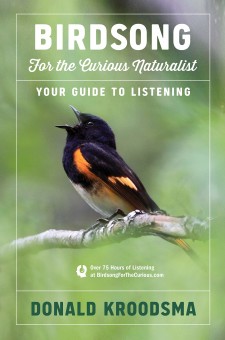 Birdsong for the Curious Naturalist: Your Guide to Listening
Birdsong for the Curious Naturalist: Your Guide to Listening
by Donald Kroodsma
From Houghton Mifflin Harcourt:
Birdsong made easy to understand, lavishly illustrated with color photos, and accompanied by more than 700 online recordings
From a leading expert, Birdsong for the Curious Naturalist is a basic, how-to guide that teaches anyone—from beginner to advanced birder—how to listen. In understandable and appealing language, Kroodsma explains why and how birds sing, what various calls mean, and what to listen for from the birds around us. The descriptions are accompanied by color photos of the birds, as well as QR codes that link to an online collection of more than 700 recordings. With these resources, readers are prepared to recognize bird sounds and the birds that make them. Kroodsma encourages readers to find the joy of birdsong and curiosity—to observe, listen intently, be curious, ask questions, and realize that many unanswered questions about birdsong don’t have to rely on scientists for answers but can be answered by any curious naturalist.
No one writes about birdsong better than Donald Kroodsma. This book is the perfect introduction to it for birders or, as the title suggests, ‘curious naturalists’. The many sounds referenced in it are available on its website – birdsongforthecurious.com. Check it out to hear – and read a bit – what it’s all about.
Birdsong for the Curious Naturalist: Your Guide to Listening
by Donald Kroodsma
Hardcover; 208 pages
Houghton Mifflin Harcourt; March 10, 2020
ISBN: 9781328919113
$27.00

Buy from Buteo Books
(based in the U.S.)
Buy from NHBS
(based in the U.K.)
There’s already quite an impressive selection of bird books set to be published in 2020. Here are the ones that have caught my eye.
Apparently, 2020 is the Year of the Bird-Behavior-and/or-Senses Book. These topics are endlessly fascinating, so I’m certainly not complaining. I’m really looking forward to all of these:
 What It’s Like to Be a Bird: From Flying to Nesting, Eating to Singing–What Birds Are Doing, and Why
What It’s Like to Be a Bird: From Flying to Nesting, Eating to Singing–What Birds Are Doing, and Why
by David Allen Sibley
April 14, 2020; Knopf
This is quite the unexpected title from Sibley, known mostly for his field guides. But this sounds really cool. Plus – life-size paintings! (“For most species, the primary illustration is reproduced life-sized”, according to the publisher’s description.)
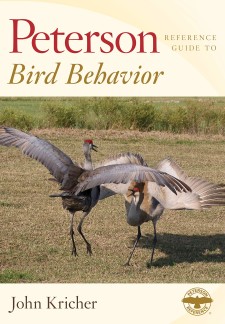 Peterson Reference Guide to Bird Behavior
Peterson Reference Guide to Bird Behavior
by John Kricher
September 1, 2020; Houghton Mifflin Harcourt
I was really excited to see this one coming; the Peterson Reference Guide series has been consistently great.
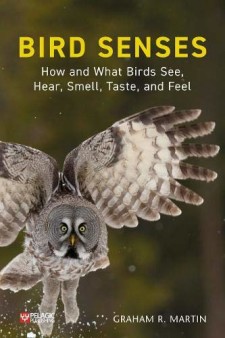 Bird Senses: How and What Birds See, Hear, Smell, Taste, and Feel
Bird Senses: How and What Birds See, Hear, Smell, Taste, and Feel
by Graham R. Martin
July 31, 2020; Pelagic Publishing
Pelagic Publishing has put out some great books, so I have every reason to be optimistic about this one.
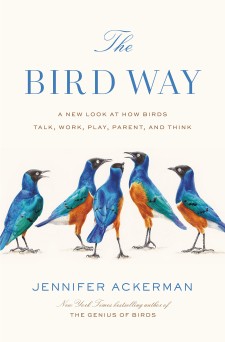 The Bird Way: A New Look at How Birds Talk, Work, Play, Parent, and Think
The Bird Way: A New Look at How Birds Talk, Work, Play, Parent, and Think
by Jennifer Ackerman
May 5, 2020; Penguin Press
Ackerman’s The Genius of Birds was great, so I have high hopes for this one also.
Field Guides
I didn’t notice very many field guides coming this year, but that’s probably because I either missed them or they haven’t been announced yet. However, a new edition of one of the most popular North American guides is a big deal, and the latest addition to the ABA area is getting lots of love.
Texas
Texas is the subject of several books this year, several of which look to be of interest even if you don’t live there.
Everything else
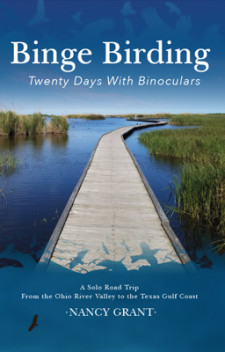 Binge Birding: Twenty Days with Binoculars
Binge Birding: Twenty Days with Binoculars
by Nancy Grant
From Nancy Grant:
Enjoy the thrill of discovery in this well-paced travel adventure that’s like going birding with a friend. When journalist and field naturalist Nancy Grant packed her SUV with a basket of maps and field guides to head south to explore the Texas Gulf Coast she had a simple plan. Look for birds everywhere. And she found them—more than 150 species—singing, soaring, hunting for food, searching for mates, and raising youngsters. Grant’s easy-going conversational style, with plenty of quirky travel anecdotes, blends in-depth natural history insights with vivid on-the-scene reporting. Grant admits with charming directness her own struggles to memorize field marks and songs, and the satisfaction of getting it right. Birders of all experience levels will enjoy coming along for the ride.
Ever wonder what it’s like to go on an extended, solo birding trip? Nancy Grant describes just such a trip she took to coastal Texas in this book. Interesting and well-written, it should appeal to newer birders.
Binge Birding: Twenty Days with Binoculars
by Nancy Grant
Paperback; 345 pages
Independently published; April 22, 2019
ISBN: 9781092878029
$15.00
 Saving Jemima: Life and Love with a Hard-Luck Jay
Saving Jemima: Life and Love with a Hard-Luck Jay
by Julie Zickefoose
From Houghton Mifflin Harcourt:
For fans of Wesley the Owl and The Soul of an Octopus, the story of a sick baby bird nursed back to health and into the wild by renowned writer/artist Julie Zickefoose.
When Jemima, a young orphaned blue jay, is brought to wildlife rehabilitator Julie Zickefoose, she is a virtually tailless, palm-sized bundle of gray-blue fluff. But she is starved and very sick. Julie’s constant care brings her around, and as Jemima is raised for eventual release, she takes over the house and the rest of the author’s summer.
Shortly after release, Jemima turns up with a deadly disease. But medicating a free-flying wild bird is a challenge. When the PBS show Nature expresses interest in filming Jemima, Julie must train her to behave on camera, as the bird gets ever wilder. Jemima bonds with a wild jay, stretching her ties with the family. Throughout, Julie grapples with the fallout of Jemima’s illness, studies molt and migration, and does her best to keep Jemima strong and wild. She falls hard for this engaging, feisty and funny bird, a creative muse and source of strength through the author’s own heartbreaking changes.
Emotional and honest, Saving Jemima is a universal story of the communion between a wild creature and the human chosen to raise it.
Reading anything by Julie Zickefoose is a treat, and her new book is no exception.
Saving Jemima: Life and Love with a Hard-Luck Jay
by Julie Zickefoose
Hardcover; 272 pages
Houghton Mifflin Harcourt; September 10, 2019
ISBN: 9781328518958
$25.00

Buy from Buteo Books
(based in the U.S.)
Buy from NHBS
(based in the U.K.)
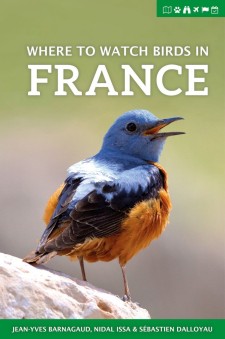 Where to Watch Birds in France
Where to Watch Birds in France
by Jean-Yves Barnagaud, Nidal Issa, and Sebastien Dalloyau
From Pelagic Publishing:
An introduction to France for anyone visiting with birds in mind, from casual birdwatchers checking a bird that flies over the terrace during a family holiday to addict birders who would sell their souls for a dream species or a record-breaking checklist. Some may have just a few spare hours to get their binoculars out between business meetings or museum visits, others will be out in the field for two weeks or more, from sunrise to sunset. The authors wrote this book for all bird lovers, birdwatchers and birders, whatever the duration of their stay, the number of kilometres they are prepared to travel and how they enjoy birds.
With over 400 regularly occurring species, of which 357 normally breed or winter, France has arguably one of the most diverse avifaunas of the whole of Europe, spanning an incredible range from colourful Mediterranean flagship species such as roller, bee-eater or black-winged kite to secretive cold-climate or mountain specialists like three-toed woodpecker and Tengmalm’s owl. The Birdfinder section provides targeted details for 30 species which often rank in the top wish-list of birders visiting France.
Dividing the country into 14 regions, the authors highlight 312 representative sites, chosen for their bird species composition and ease of access. The selected sites enable the reader to see the widest possible species diversity and largest range of local specialities in a reasonable time, while respecting the basic ethical rules obvious to all birdwatchers. Whenever possible, sites are arranged in clusters or itineraries that can be covered in two to three days without hurrying. To supplement the use of the book in the field, all the sites described are geolocated in a file that can be downloaded from the publisher’s website and loaded onto any GPS device.
All you could want in a birdfinding guide, with lots of maps and just the right level of detail, all in a very compact package.
Where to Watch Birds in France
by Jean-Yves Barnagaud, Nidal Issa, and Sebastien Dalloyau
Paperback; 336 pages
Pelagic Publishing; June 30, 2019
ISBN: 9781784271541
$32.99

Buy from Buteo Books
(based in the U.S.)
Buy from NHBS
(based in the U.K.)
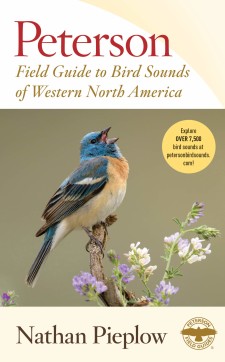 Peterson Field Guide to Bird Sounds of Western North America
Peterson Field Guide to Bird Sounds of Western North America
by Nathan Pieplow
From Houghton Mifflin Harcourt:
A comprehensive field guide that uses an innovative Sound Index to allow readers to quickly identify unfamiliar songs and calls of birds in western North America.
Bird songs and calls are at least as important as visual field marks in identifying birds. Yet short of memorizing each bird’s repertoire, it’s difficult to sort through them all. Now, with the western edition of this groundbreaking book, it’s possible to visually distinguish bird sounds and identify birds using a field-guide format.
At the core of this guide is the spectrogram, a visual graph of sound. With a brief introduction to five key aspects—speed, repetition, pauses, pitch pattern, and tone quality—readers can translate what they hear into visual recognition, without any musical training or auditory memorization.
The Sound Index groups similar songs together, narrowing the identification choices quickly to a brief list of birds that are likely to be confused because of the similarity of their songs. Readers can then turn to the species account for more information and/or listen to the accompanying audio tracks available online.
Identifying birds by sound is arguably the most challenging and important skill in birding. This book makes it vastly easier to master than ever before.
The western edition of this innovative guide is now available (the eastern guide was published in 2017). All of the sounds in the book – “plus thousands more bonus recordings” – are available at petersonbirdsounds.com. It’s a valuable resource even without the book, as it’s a very extensive collection with spectrograms that allow you to see the sounds. But with the book, with its much-needed analysis and ancillary details, it should prove even easier to learn and identify sounds.
Peterson Field Guide to Bird Sounds of Western North America
by Nathan Pieplow
Flexi-bound; 648 pages
Houghton Mifflin Harcourt; April 2, 2019
ISBN: 9780547905570
$28.00

Buy from Buteo Books
(based in the U.S.)
Buy from NHBS
(based in the U.K.)
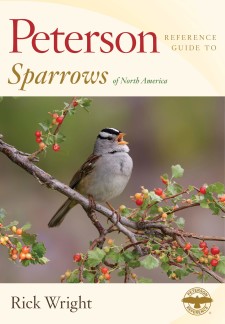 Peterson Reference Guide to Sparrows of North America
Peterson Reference Guide to Sparrows of North America
by Rick Wright
From Houghton Mifflin Harcourt:
Sparrows are as complicated as they are common. This is an essential guide to identifying 76 kinds, along with a fascinating history of human interactions with them.
What exactly is a sparrow? All birders, and many non-birders, have essentially the same mental image of a pelican, a duck, or a flamingo, and a guide dedicated to waxwings or kingfishers would need nothing more than a sketch and a single sentence to satisfactorily identify its subject. Sparrows are harder to pin down. This book covers the birds of the family Passerellidae, which includes towhees, juncos, and dozens of other not necessarily small and not necessarily brown birds.
Birds have a human history, too, beginning with their significance to native cultures and continuing through their discovery by science, their taxonomic fortunes and misfortunes, and their prospects for survival in a world with ever less space for wild creatures. This book includes not just facts and measurements, but stories of the birds’ entanglement with human history.
Despite the publisher’s claim above, this isn’t an identification guide (though it does have some information on ID), but rather a family natural history guide. However much this may look like the previous entries in this excellent series, though, once you start reading it you will find that it is unlike any other family reference guide. Instead of sticking with just the birds’ natural history, it deals greatly with their history with people.
Peterson Reference Guide to Sparrows of North America
by Rick Wright
Hardcover; 448 pages
Houghton Mifflin Harcourt; March 19, 2019
ISBN: 9780547973166
$35.00

Buy from Buteo Books
(based in the U.S.)
Buy from NHBS
(based in the U.K.)
 With Wings Extended: A Leap into the Wood Duck’s World
With Wings Extended: A Leap into the Wood Duck’s World

 What It’s Like to Be a Bird: From Flying to Nesting, Eating to Singing-What Birds Are Doing, and Why
What It’s Like to Be a Bird: From Flying to Nesting, Eating to Singing-What Birds Are Doing, and Why
 Peterson Field Guide to Birds of North America, Second Edition
Peterson Field Guide to Birds of North America, Second Edition Birdsong for the Curious Naturalist: Your Guide to Listening
Birdsong for the Curious Naturalist: Your Guide to Listening What It’s Like to Be a Bird: From Flying to Nesting, Eating to Singing–What Birds Are Doing, and Why
What It’s Like to Be a Bird: From Flying to Nesting, Eating to Singing–What Birds Are Doing, and Why Peterson Reference Guide to Bird Behavior
Peterson Reference Guide to Bird Behavior Bird Senses: How and What Birds See, Hear, Smell, Taste, and Feel
Bird Senses: How and What Birds See, Hear, Smell, Taste, and Feel The Bird Way: A New Look at How Birds Talk, Work, Play, Parent, and Think
The Bird Way: A New Look at How Birds Talk, Work, Play, Parent, and Think Peterson Field Guide to Birds of North America, Second Edition
Peterson Field Guide to Birds of North America, Second Edition American Birding Association Field Guide to Birds of Hawaii
American Birding Association Field Guide to Birds of Hawaii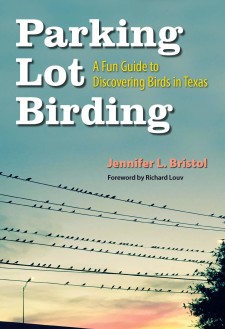 Parking Lot Birding: A Fun Guide to Discovering Birds in Texas
Parking Lot Birding: A Fun Guide to Discovering Birds in Texas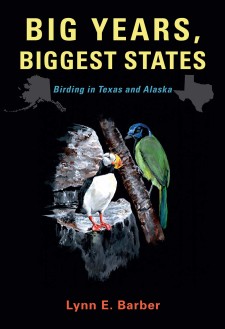 Big Years, Biggest States: Birding in Texas and Alaska
Big Years, Biggest States: Birding in Texas and Alaska Birdsong for the Curious Naturalist: Your Guide to Listening
Birdsong for the Curious Naturalist: Your Guide to Listening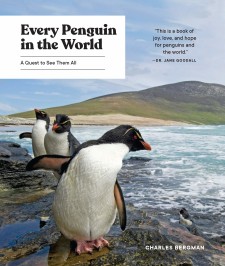 Every Penguin in the World: A Quest to See Them All
Every Penguin in the World: A Quest to See Them All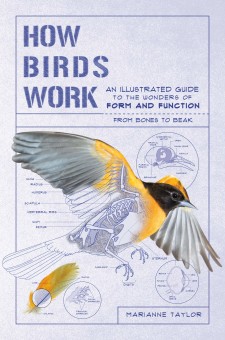 How Birds Work: An Illustrated Guide to the Wonders of Form and Function ― from Bones to Beak
How Birds Work: An Illustrated Guide to the Wonders of Form and Function ― from Bones to Beak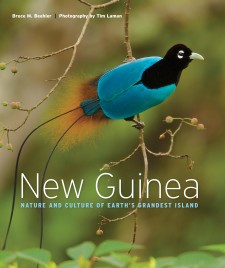 New Guinea: Nature and Culture of Earth’s Grandest Island
New Guinea: Nature and Culture of Earth’s Grandest Island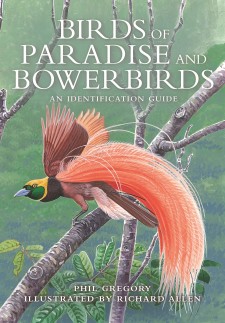 Birds of Paradise and Bowerbirds: An Identification Guide
Birds of Paradise and Bowerbirds: An Identification Guide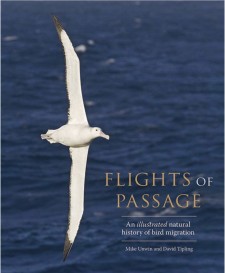 Flights of Passage: An Illustrated Natural History of Bird Migration
Flights of Passage: An Illustrated Natural History of Bird Migration Binge Birding: Twenty Days with Binoculars
Binge Birding: Twenty Days with Binoculars Saving Jemima: Life and Love with a Hard-Luck Jay
Saving Jemima: Life and Love with a Hard-Luck Jay Where to Watch Birds in France
Where to Watch Birds in France Peterson Field Guide to Bird Sounds of Western North America
Peterson Field Guide to Bird Sounds of Western North America Peterson Reference Guide to Sparrows of North America
Peterson Reference Guide to Sparrows of North America



